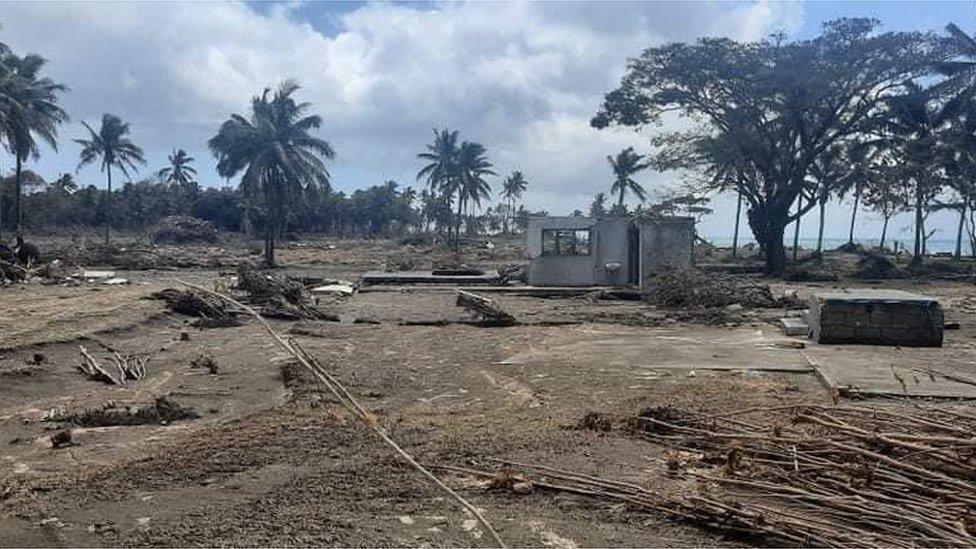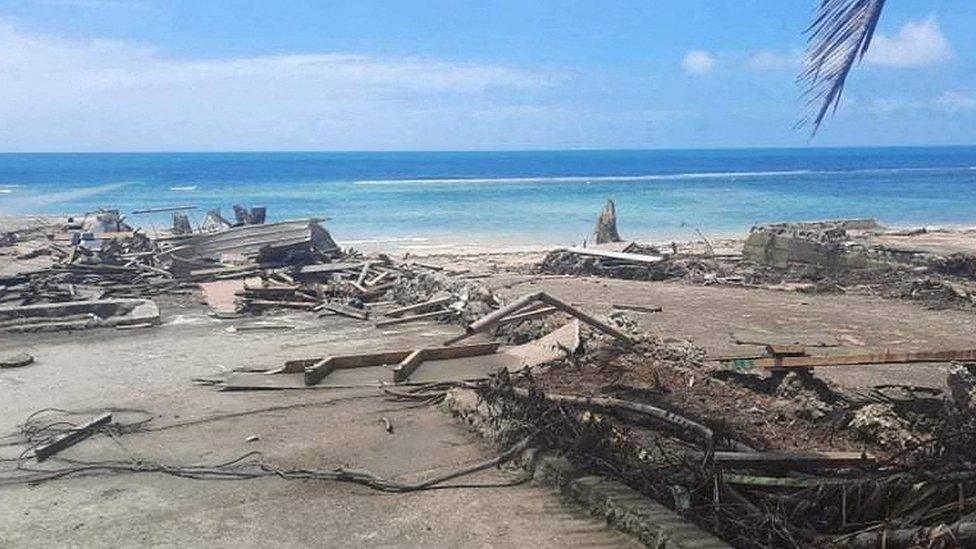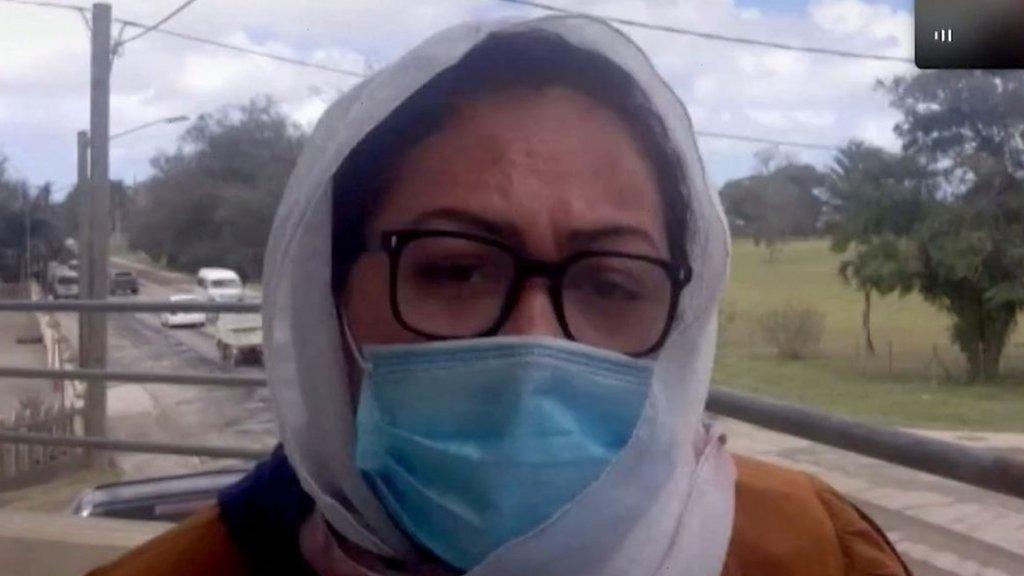Tonga volcano: Eruption more powerful than atomic bomb, Nasa says
- Published

Images from Tonga's shoreline show damage to structures and trees following the tsunami
A volcanic eruption in Tonga that triggered a tsunami was hundreds of times more powerful than the atomic bomb the US dropped on Hiroshima during World War Two, Nasa says.
The eruption "obliterated" a volcanic island north of the Tongan capital Nuku'alofa, the agency said., external
Tonga says more than four-fifths of the population has been affected by the tsunami and falling ash.
Three people were confirmed killed in the tsunami last week.
Before the eruption, the Hunga Tonga-Hunga Ha'apai volcanic island was two separate islands joined by new land formed in 2015.
Nasa says the eruption was so powerful all the new land is gone, along with "large chunks" of the two older islands.
The widespread emission of volcanic ash, gases and particles from the eruption has proven to be a massive challenge for Tongan officials.
In the immediate aftermath of the eruption and tsunami, there were fears that water sources had been polluted by the thick blanket of ash, increasing the risk of diseases like cholera and diarrhoea. However, officials noted that testing in recent days had cleared ground water and rainwater as safe to drink.
But fine volcanic ash and emissions continue to pose a public health risk. Exposure could potentially cause breathing difficulties, affect the cardiovascular system, and irritate the lungs, eyes and skin.

Tonga's deadly tsunami

In an update, the government said 62 people on Mango, one of the worst-hit islands, had to be relocated to the outer island of Nomuka "after losing their homes and all of their personal belongings".
The government added however, that many of those residents could be moved again to the main island Tongatapu due to a lack of food and supplies.
It added that there were under two dozen injuries, mostly from Nomuka .
Rescuers have set up a field hospital there after the existing clinic was swept away in the tsunami.
Ships and planes carrying foreign aid have been arriving in Tonga since last week, after locals were finally able to clear the island's only airport runway of ash.
New Zealand and Australia have led the international response, using their air force and naval carriers to make contact-less drops of supplies including water, food, hygiene kits and tents, as well as water-treating and telecommunications repair equipment.
The remote archipelago was cut off for five days because the explosions severed the sole fibre-optic sea cable bringing internet to the island.
A patchy telephone line was restored last week, allowing "limited international phone calls".
"Get ready to run": Watch Tongan journalist Marian Kupu recount the moment the undersea volcano erupted
But even communication between Tongatapu, the main island, and the outer islands remains "an acute challenge", the Tongan government statement said.
They added that a ship was due to arrive this week to repair the internet cable. Firms had previously estimated the cable could take up to four weeks to repair.
The arrival of foreign aid has vastly accelerated the flow of information from the stricken island.
Due to Covid fears, the aid work is still all being carried out by locals through groups like the Red Cross. Tonga, which is effectively Covid-free, has requested no foreign aid workers land in the country to prevent an outbreak.
But the UN's representative in the region, Sione Hufanga, told the BBC that could change given the scale of damage.


Related topics
- Published21 January 2022

- Published21 January 2022
- Published20 January 2022
